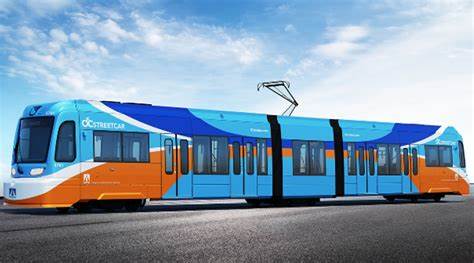There are now more construction delivery vehicles available to government project managers than ever before. Each is equipped in different ways to address the often-competing needs of project owners in the public sector, such as the need to expedite project initiation, maximize competition, avoid cost overruns and unnecessary delays, and minimize risk. Some of the delivery models are best suited for new construction and others for renovations or smaller-scale projects. Some allow the owner to retain greater control to minimize cost overruns and delays, but increased control comes with increased risk, and some shift greater control and risk to the contractor. Other models are designed to optimize competition in the bidding process, while some are designed to expedite the award and project initiation. With more project delivery vehicles available in the public sector, it is more important than ever to understand each project delivery vehicle, the related benefits and risks, and how those benefits and risks are best suited for different types of projects and the owner’s risk appetite. Below we provide an overview of five common project delivery methods, the benefits and risks of each, and the factors project owners and stakeholders should consider before initiating a capital construction project or renovation.
Design, Bid, Build (DBB)
Design, Bid, Build is one of the most commonly used methods and is often referred to as the “traditional model.” There are three linear phases with this delivery method. The first phase is the design phase, in which the owner selects an in-house or contracted engineer/architect to design the project. The second is the bid phase, in which a prime contractor is selected through a competitive solicitation process, typically awarding the contract to the lowest responsive and responsible bidder. The third and final phase is the construction or build phase, in which the project is constructed and completed. The low-bid method is designed to increase competition, eliminate the perception of bias in the awarding of government contracts, and ensure project delivery for the lowest cost afforded by the market. With Design, Bid, Build, the owner maintains a high level of control and much of the project risk, particularly those impacting project cost; however, the prime contractor is responsible for ensuring sub-contractors provide quality work and project timelines are met. This project delivery model can take longer to complete because the bid phase generally does not occur until the schematic design is complete. There is also a greater risk of change orders if project bid documents do not clearly define the scope of work, plans and specifications.
Multi-Prime (MP)
The Multi-Prime project delivery method follows the same three linear phases as the Design, Bid, Build and the Design/Build methods; but, instead of a single prime contractor selected through the low-bid process, the Multi-Prime approach includes the selection of a general contractor and separate specialty contractors for elements of the scope of work rather than a single general or prime contractor. By contracting directly with various contractors, the project owner can significantly reduce the number of subcontractors, including related markups; however, the owner becomes responsible for overseeing the work of each directly-sourced contractor. This gives the owner greater control over the project, potentially mitigating potential delays and cost overruns. But, this increased control also presents greater risk to the owner, as the owner is responsible for ensuring contractors provide quality work and adhere to contract provisions and timelines. Using the Multi-Prime approach requires the owner have the expertise and resources to oversee the design and construction.
Design/Build (DB)
With the Design/Build project delivery method, both the design and construction components are awarded under a single contract—often through a joint venture, in which architectural and construction companies team up on a project, or to a large firm with expertise in both architecture/engineering and construction management. One advantage of Design/Build is that the design team and construction team are working together from the start of the project, allowing for increased collaboration and continuity, value engineering, and constructability reviews. In addition, there are generally fewer pricing change orders as changes are often limited to instances where unknown conditions exist or owner scope changes result in cost increases. The owner can generally establish a firm maximum price early on and deliver the project on a tighter schedule due to time-savings from eliminating the bid phase. At the same time, the owner has less control over the materials used, certain design elements, and the construction phase. Much of the project risk is shifted from the owner to the selected contractor. With this approach, the owner should ensure the project requirements are clearly defined prior to design and that the firm or team selected is highly qualified with experience building similar projects.
Construction Manager/General Contractor (CM/GC) or Construction Manager at Risk (CMAR)
As the name indicates, the CM/GC model is designed to shift incentives for successful project delivery to the firm selected to be the CM/GC, including related risks. In the public sector, more agencies are beginning to use the CM/GC project delivery method, often for large, complex projects. Under this model, the CM/GC is brought onto the project early during the design phase and provides pre-construction services, such as constructability reviews, cost estimates, and value engineering options. By including the CM/GC in the design phase, the selected contractor has a better understanding of the project requirements, reducing the number of change orders during the construction phase and providing greater lead-time to procure materials. In addition, trade bid packages are often bid out prior to the design being 100 percent complete. A “Guaranteed Maximum Price” is negotiated between the owner and contractor for services provided during the construction phase. There are generally fewer change orders related to errors and omissions or unclear bid documents. This allows some of the advantages of the Design/Bid model to be realized, such as a quicker start to construction, transfer of some risk from the owner to the contractor, and faster project delivery. While there are many advantages to this delivery method, one challenge is that the designer works directly for the owner and there is no contractual relationship between the designer and CM/GC. As a result, disagreements between both contractors may arise related to the quality and completeness of the design. When selecting this approach, the owner should establish clear roles and responsibilities for all parties, protocols for communication, and goals for achieving a collaborative working relationship and project outcomes.
Job Order Contracting (JOC)
Job Order Contracting is often used for smaller-scale and routine capital projects and renovations. As the name indicates, projects are awarded and completed through job orders executed under pre-existing on-call contracts. With Job Order Contracting, the contractor agrees to provide a number of services for a fixed price established in a Unit Price Book. Because contracts are not competitively bid, the scope of work should generally be limited to those services defined in a Unit Price Book, limiting the use of non-pre-priced items. The primary advantages of Job Order Contracting include expedited project completion, as a result of the expedited bid/award process, and predictable and stable project costs. Job Order Contracting programs are typically administered by a third-party, resulting in increased administrative fees, and are often not an effective method for larger, more complex construction projects, including most new construction and renovations with potential unforeseen conditions. When using this approach, it is important that the owner assess contractor performance, usage of on-call contractors, and project performance, to help ensure one contractor is not unfairly receiving more work than others, the quality of work meets the owner expectations, and that this method is not being used to circumvent the agencies contracting requirements. Because projects are not-competitively bid, it becomes increasingly important for the owner to assess the usage of non-pre-priced items.
There is no single project delivery approach that will meet every owner’s needs, mitigate all risks, or produce all available benefits. Exhibit 1 below illustrates the potential benefits each method has in comparison to others.
Exhibit 1. Comparison of Project Delivery Models
[siteorigin_widget class=”FT_Widget_Image”][/siteorigin_widget]
When determining what the best project delivery method is for a project, the owner should consider several factors, including desired level of owner control over the project, complexity of project scope and size of project budget, constraints on project schedule, owner’s acceptable level of risk, internal policies and procedures guiding the selection and usage of project delivery models, and in-house expertise and available resources to oversee and manage the project. The owner’s position on each will help determine which model should be used. A leading practice for public sector agencies is developing guidance to help project managers determine which model best fits the agencies goals and objectives, and to document the rationale for selecting the chosen project delivery method.
No matter the model chosen, the owner should develop performance metrics to assess whether the project achieved desired goals and benefits, help identify areas where improvements should be made on future projects, and compare the outcomes of each project delivery method, such as total time from start to completion, budget-to-actual, percent of change orders, and contractor performance. This information can help public sector agencies provide greater accountability and transparency, while helping to identify and mitigate similar risks on future projects.




